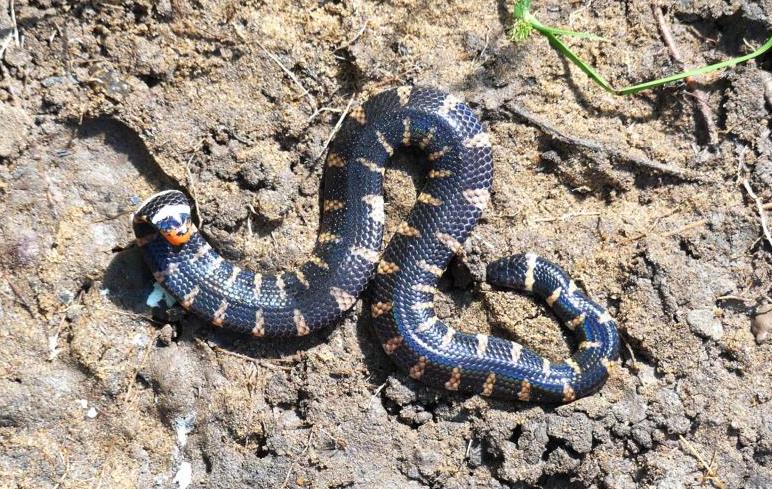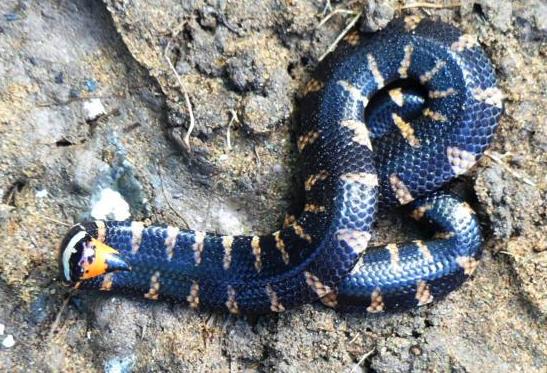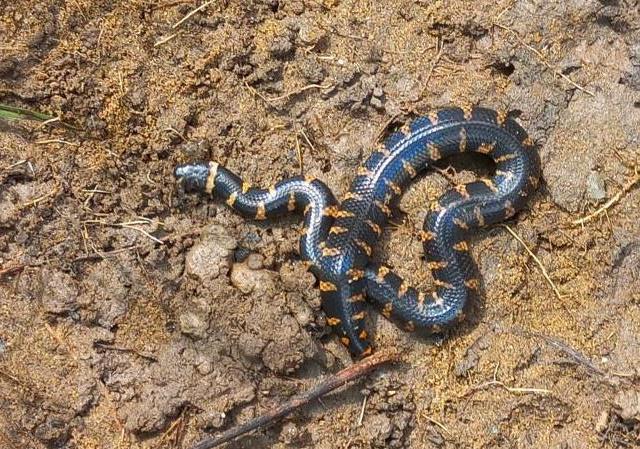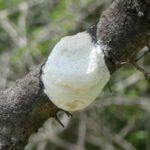The ‘Red-tailed pipe snake’ (Cylindrophis ruffus) was recently renamed ‘Jodi’s pipe snake’ (Cylindrophis jodiae), which we are talking about here. It is called a ‘Pipe snake’ because it has a round, pipe-like body. The lower end of the body can be flattened when threatened.

Description of the Red-tailed Pipe Snake
This is a very unique snake. It reaches a maximum length of about 0.9 meters. Pipe snakes are viviparous (they give birth to live young) and are already about 20cm / 8’’ long when born. The snake’s entire body is iridescent, like a sunbeam snake. When threatened, it flattens the rear part of the body and raises the flat tail above the body like a scorpion. The overall impression that this is a scorpion is reinforced by the fact that the end of the tail is colored brightly red and has a black pointy tip. This looks like a scorpion tail with a stinger.

Literature on the Internet compares this rear-end appearance with the flattened neck of a cobra or coral snake, but these comparisons are far-fetched due to the size of the tail. For me, it resembles a scorpion tail with its telson.
Red-tail Pipe snakes are back-fanged and venomous to humans. However, firstly, they are very docile and reluctant to bite. Secondly, their mouths (and eyes) are tiny. They would need quite a long time to find and chew human skin folds thin and long enough for them to use their back fangs. Their usual prey are long and thin gastropods, fish (eels), reptiles, and caecilian amphibians.
When young, Red-tail pipe snakes show distinctive yellow and black striped markings on their backs. The underside of the back of the body is checker-marked. As they age, the markings become faint.
For further descriptions, kindly see this Wikipedia page.
Distribution of Red-tailed pipe snake

Red-tail Pipe snakes are nocturnal and common in wetlands in India and Southeast Asia. Their conservation status is LC (Least concern).
Are Red-tailed pipe snakes dangerous to humans?

When I was in Cần Thơ, in the Mekong Delta of southern Vietnam, looking for earthworms, we found a Red-tail Pipe snake under a flat stone near a pond. Seeing this snake, my Vietnamese friend became highly excited and immediately wanted to kill it. According to him, these snakes will not bite but have a poisonous sting on the tail. Moreover, he cautioned that the affected limb or body part will swell up to three times the standard size when stung. I was able to convince him not to kill it. However, the farmer, later on, was unhappy that we did not kill the snake, and a friend of his lectured me afterward – as a foreigner – that these snakes are highly dangerous due to their sting.
I can only say that all three guys were wrong. Red-tailed pipe snakes will not and can not effectively bite, and they do not have a stinger on their tails. These snakes should be left alone and considered a valuable part of the local biosphere.
Lessons learned from the Red-tailed pipe snake:
- Not every snake is dangerous, even if it appears like that.
- Do not always believe local ‘knowledge.’ Often, it is just superstition, unreflected traditional knowledge, or an excessive fear of snakes.
- Red-tailed pipe snakes are very docile, reluctant to bite, and have no sting on their tail.
.





